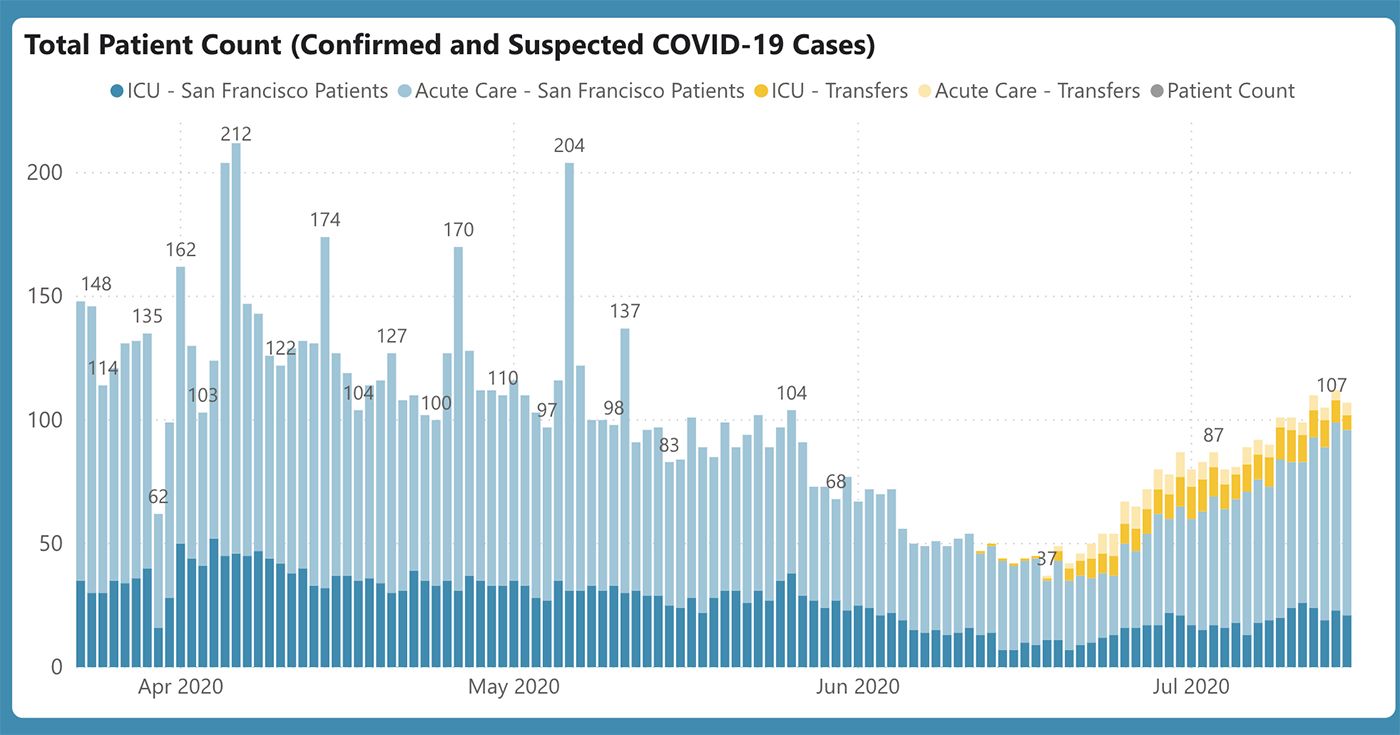San Francisco, which has remained relatively lucky since the start of the COVID-19 pandemic when it comes to case counts and hospital censuses, just landed on the state watch list due to an increase in hospitalizations. The designation means that non-essential offices that have reopened must close, and shopping malls must re-close as well.
Reopening of businesses has been on pause in SF for the last two weeks, as there were signs of a surge in cases and hospitalizations. The city saw a new peak in hospitalized COVID patients on Sunday with 93, topping a previous peak of 90 on April 8, and then topped that again on Tuesday with 99 patients hospitalized. Of those, 23 were confirmed and suspected cases in intensive care units (ICUs), and and 76 were in acute-care beds. Additionally, as of Wednesday, there were six patients in ICUs in SF hospitals transferred from other counties, and five transfers in acute beds.

San Francisco also saw two new deaths this week, bringing the total death toll to 52, after nearly a month without a single new COVID-related death.
Total cases in San Francisco increased today by 115, bringing the cumulative total to 4,975.
In a video update today, Mayor London Breed said that she had tested negative for a second time after being exposed to a COVID-positive person last week. And she gave some impassioned pleas for everyone to keep wearing masks, staying distanced, and washing their hands.
"As of today, San Francisco is on the state watch list due to rising hospitalizations, meaning we need to follow the state restrictions even though we were given a variance not too long ago to move forward more quickly with our reopening," Breed said. "We already followed almost all these restrictions. The main change is that indoor malls and non-essential offices must now close. If the state adds more restrictions, we will of course follow them."
"What I’m afraid of is complacency,” Breed said. “People are tired of the virus, but the virus is not tired of us. We are not reopening until we get this under control,” she added.
“We have flattened this curve once and we must do so again," Breed said.
Dr. Grant Colfax, the city's health officer, also provided an update, and shared the eye-opening figure that the average age of hospitalized COVID patients in San Francisco right now is 41.
"Young people, middle-aged people, older people, we are all at risk for this disease and all-at risk for serious consequences," he said. "We know we can do better."
Still, San Francisco remains far below its hospital capacity, which is why transfer patients have been arriving in city hospitals from elsewhere, including Marin County — where an outbreak at San Quentin has threatened to overwhelm the health system there — and Imperial County on the Mexico border.
Also, ICU bed occupancy in SF is still far below April levels, with a peak on Saturday of 26 ICU patients — half of the peak of 52 seen on April 4.
As of Wednesday, the city still has 407 available ICU beds, and 682 acute-care beds open, with 100 percent of surge beds still available that were established back in March and never used.
For now, outdoor dining and indoor retail of many kinds remain open in San Francisco, but that could change if case numbers don't improve, as Breed warned.
As the Chronicle notes, San Francisco's new orders also come in the context of a Bay Area-wide surge in hospitalizations, with over 740 COVID patients currently in Bay Area hospitals. That far exceeds a peak of 454 seen in early April.

